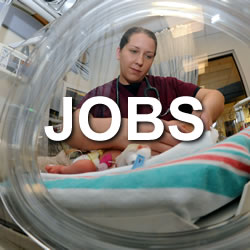Cornea Transplantation
In prosperity, our friends know us; in adversity, we know our friends - William Blake

image by: Eversight
HWN Suggests
Ex-Starbucks Exec Helps Develop Global Eye Banks
Some 10 million people suffer from corneal blindness. It's relatively rare in the U.S., and if you have it, you're likely to have a corneal transplant and your vision will be restored. But in the developing world, where most corneal blindness occurs, it's a different matter.
Now, a Seattle-based nonprofit is applying lessons learned in the coffee business in its efforts to bring sight to as many people as it can.
Tucked away in a downtown Seattle office building is one of the largest eye banks in the world. It's run by an organization called SightLife. It finds organ donors, collects the corneas from the newly deceased and prepares the tissue for surgery.
Tim…
Resources
 Corneal transplantation in the modern era
Corneal transplantation in the modern era
Corneal blindness is one of the major causes of reversible blindness, which can be managed with transplantation of a healthy donor cornea. It is the most successful organ transplantation in the human body as cornea is devoid of vasculature, minimizing the risk of graft rejection.
 Our artificial cornea breakthrough could lead to self-assembling organs
Our artificial cornea breakthrough could lead to self-assembling organs
For every person in the world who receives a cornea transplant, there are 69 others who still need one. That leaves about 12.5m people with limited sight because there aren’t enough eye donors. But what if we could grow new corneas in the lab?
A brief history of corneal transplantation: From ancient to modern
Indeed, the first successful human corneal transplant was not performed by Eduard Zirm until 1905. Since that first successful corneal transplant, innumerable ophthalmologists have contributed to the development and refinement of corneal transplantation aided by the development of surgical microscopes, refined suture materials, the development of eye banks, and the introduction of corticosteroids.
Cornea transplants: What to Expect from Keratoplasty
Total cornea transplant recovery time can be up to a year or longer. Initially, your vision will be blurry for the first few months — and in some cases may be worse than it was before — while your eye gets used to its new cornea.
 Ex-Starbucks Exec Helps Develop Global Eye Banks
Ex-Starbucks Exec Helps Develop Global Eye Banks
Some 10 million people suffer from corneal blindness. It's relatively rare in the U.S., and if you have it, you're likely to have a corneal transplant and your vision will be restored. But in the developing world, where most corneal blindness occurs, it's a different matter.
SightLife
With strategic partners in over 30 countries, SightLife is expanding access to the full range of corneal health services that patients need, when and where they need them.
Cornea Research Foundation of America
Serving as a world-class research and educational organization dedicated to the preservation and restoration of vision. "We give people back the use of their eyes."
NHS
At Organ Donation we are doing everything with one focus - to save or improve the lives of thousands of people every year through organ transplantation.
Larry Wall's Cornea Transplant Diary
It seems to be fashionable to keep a diary of your experiences if you have a cornea transplant, so I guess I'd better get with it. But first, a bit of history.
StatPearls
Corneal disease ranks as the fifth leading cause of blindness in the world. Keratoplasty is the most common and successful transplantation in humans with the first transplant completed in 1905.

Introducing Stitches!
Your Path to Meaningful Connections in the World of Health and Medicine
Connect, Collaborate, and Engage!
Coming Soon - Stitches, the innovative chat app from the creators of HWN. Join meaningful conversations on health and medical topics. Share text, images, and videos seamlessly. Connect directly within HWN's topic pages and articles.













